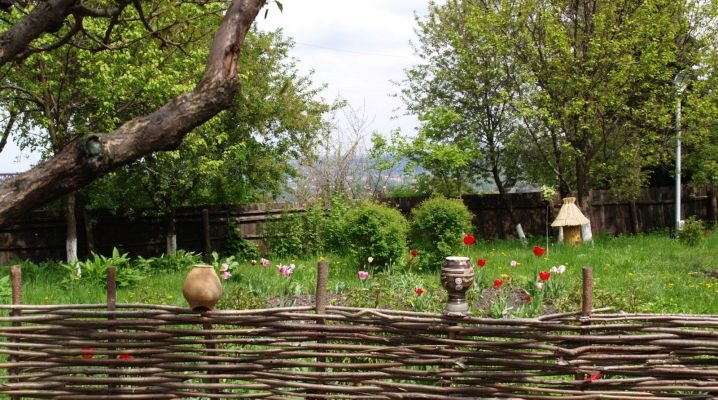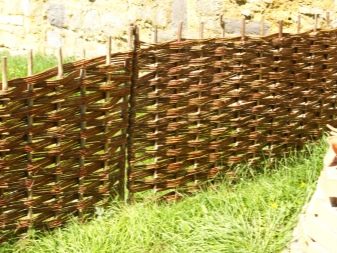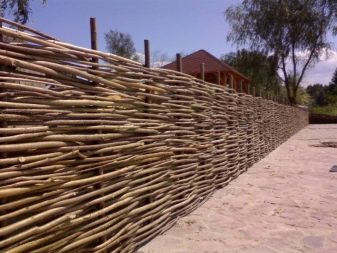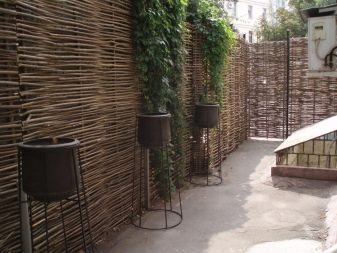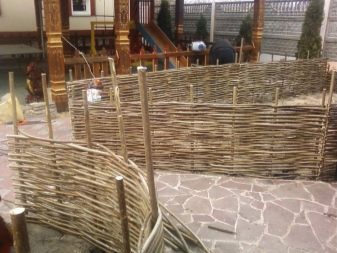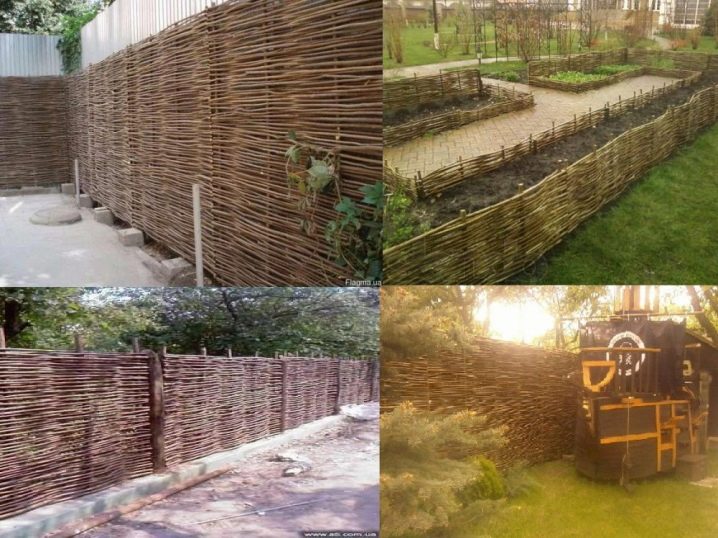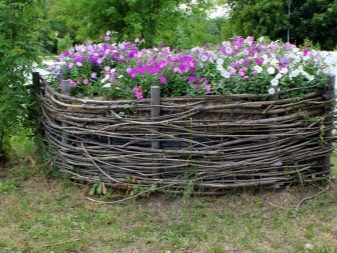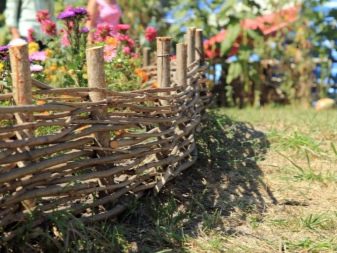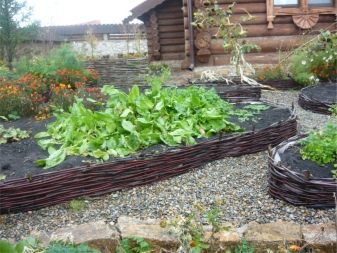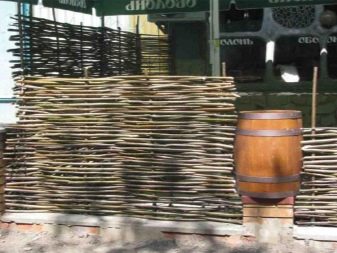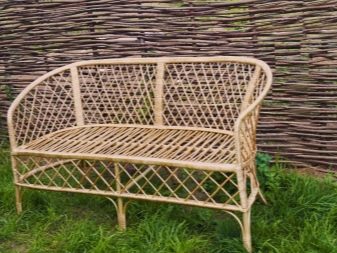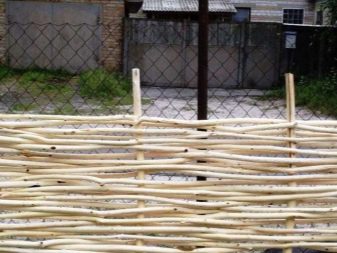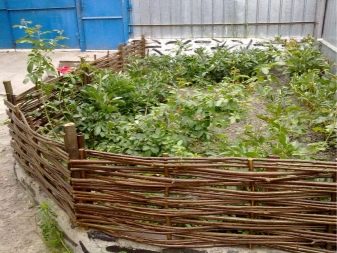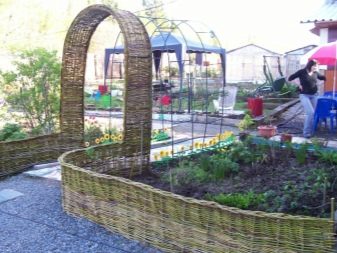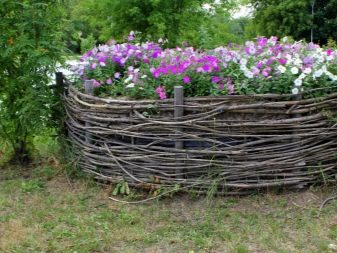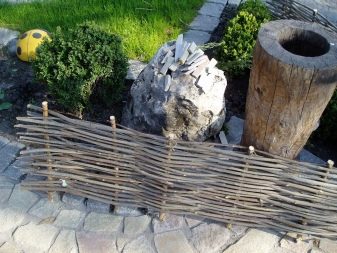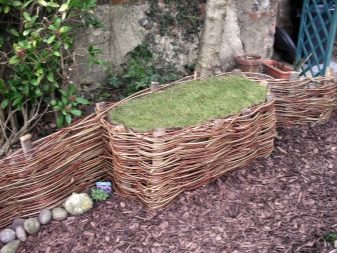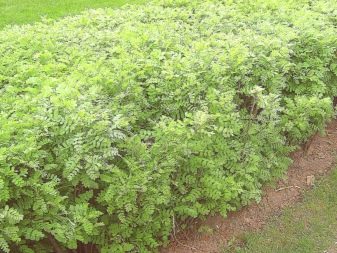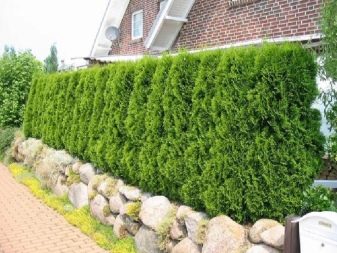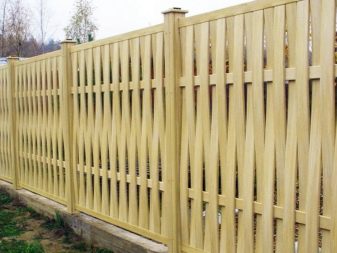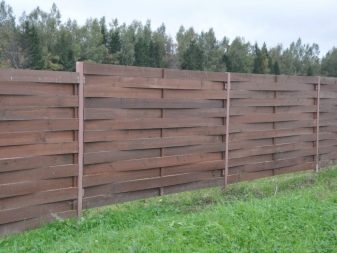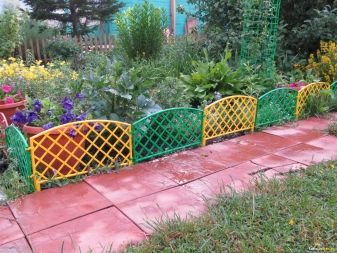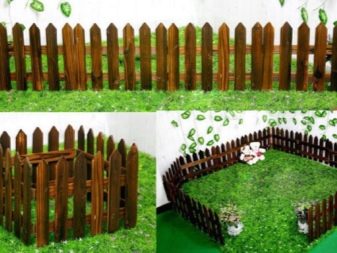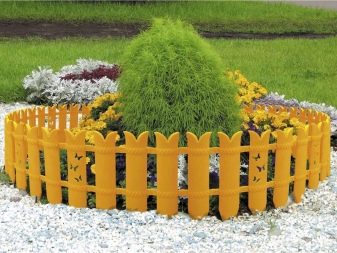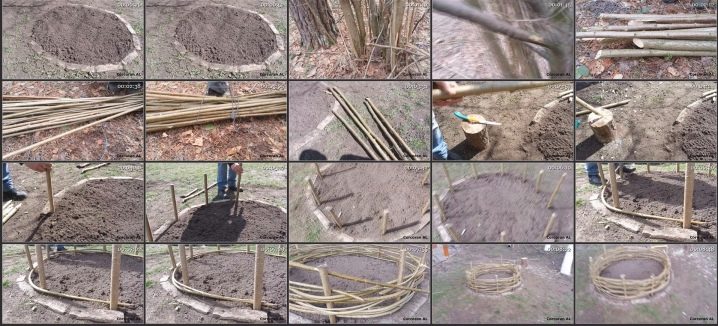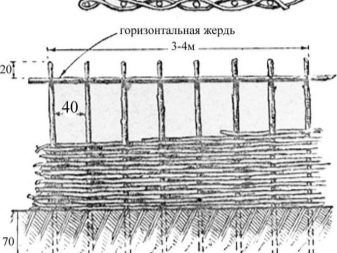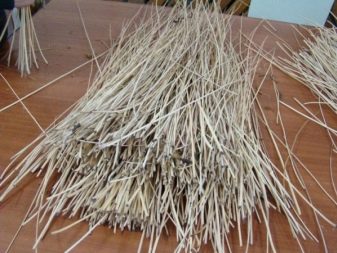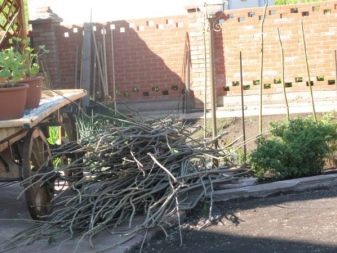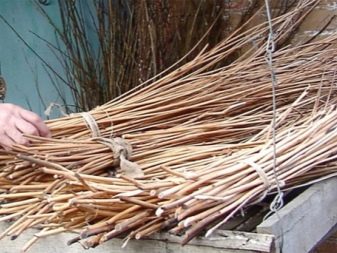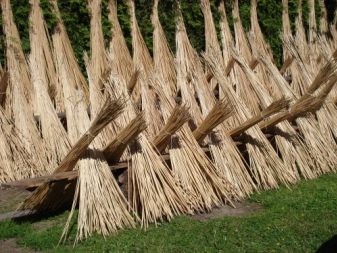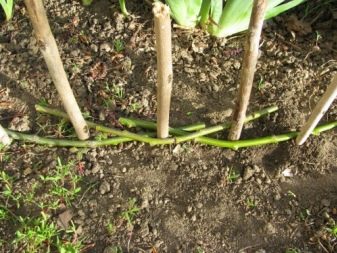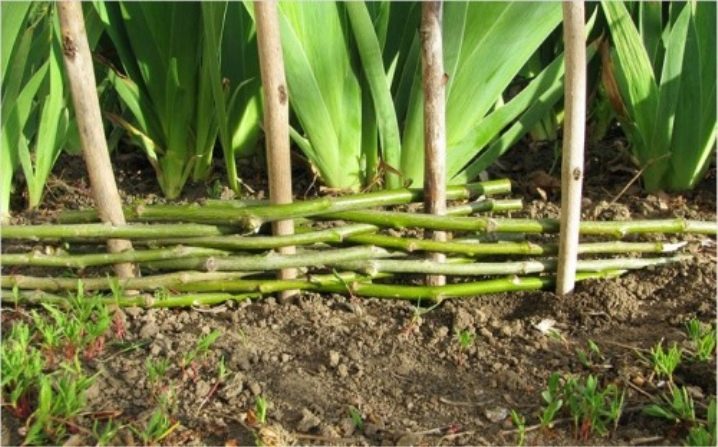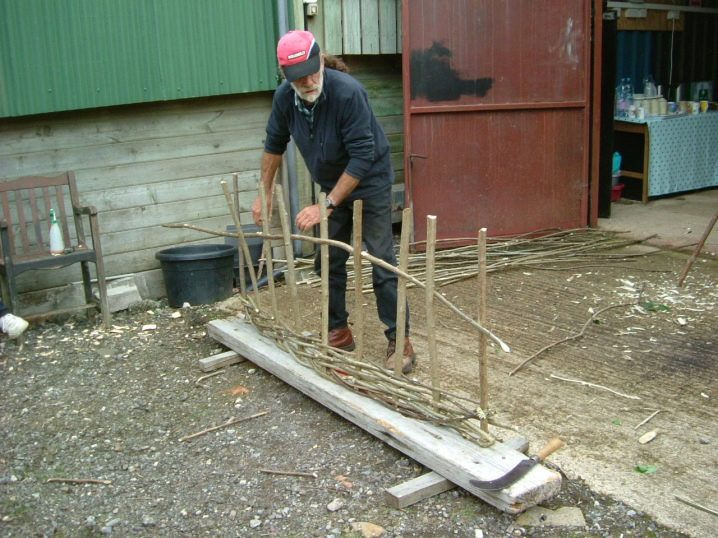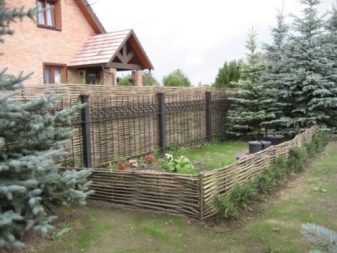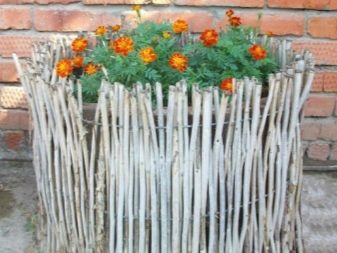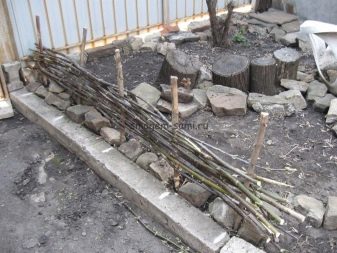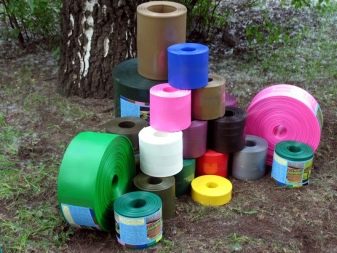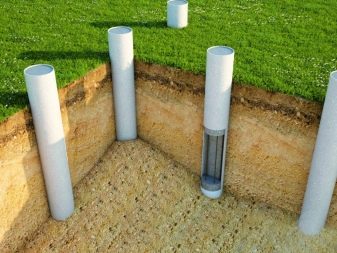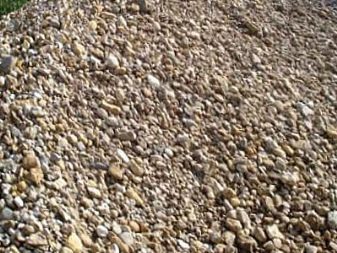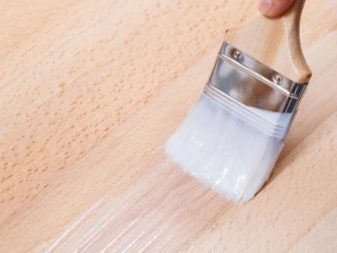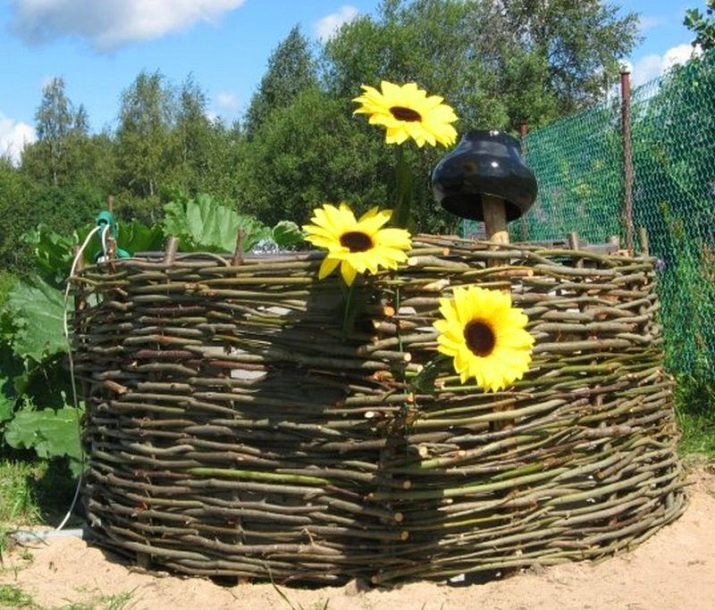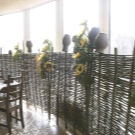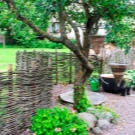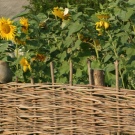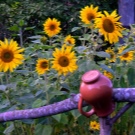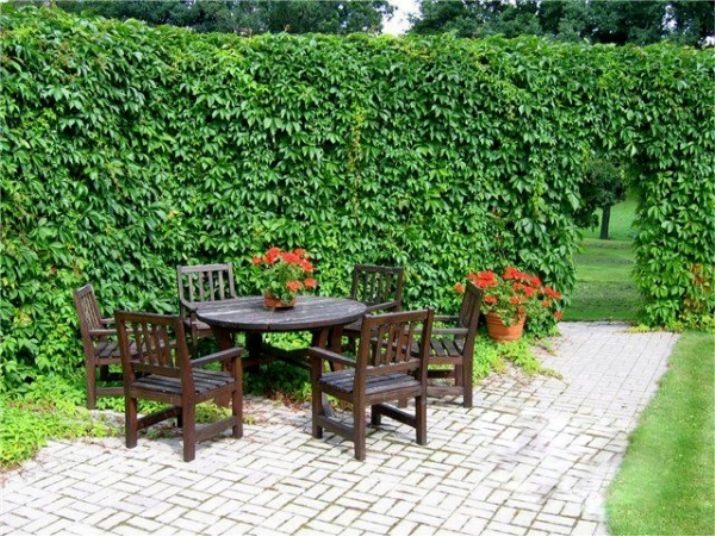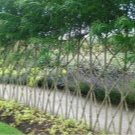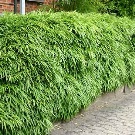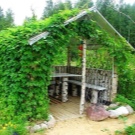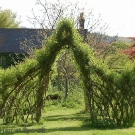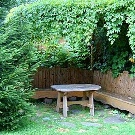The original wicker fence in the country: manufacturing technology
Eco-friendly hedge of woven branches - is an archaic exterior decoration of landscape design in the style of country, which is gaining increasing popularity. Such designs are convenient not only to make out flower beds and flower beds, but also to perform landscape zoning.
The main advantage of wicker fencing is the ability to make them yourself from various materials at hand. How to do this is described in our article.
Special features
The first wattles appeared in the Stone Age. In the Neolithic era, fences from young scrub shoots acted as walls of plain residential or household buildings, and later acquired the functions of a fence.
Nowadays, pretty wicker fences are used todecorating summer cottages and house territories.
Wicker fence is a lightweight fence, for the manufacture of which there are shoots or flexible branches of the bush. Due to the use of natural materials after minimal processing (or even its absence), the weave acquires a chaotic, artisanal structure. Therefore, these partitions look as natural as possible, becoming an organic continuation of the landscape design of a country house or a country house, made in the "village" style with its inherent elements of eco-style.
The main advantages of wicker fence include:
- Versatility. Wicker partitions decorate flower beds, form supports for climbing garden crops, mark the visual boundaries between adjacent areas, patio barbecue, dining area, pool and relaxation corners.
- Visual appeal. A variety of techniques of artistic weaving (from simple to rope and chess) allows you to create original masterpieces that make the design of the garden landscape truly unique, distinguishing it from others.
- The ability to create optimal conditions for growth and the development of shade-loving and moisture-loving plants, if during the erection of wattle fence provide for earthen filling. In this case, the installation of an openwork partition, well permeable for air flow, will be much more efficient than a continuous fence.
- Availability and cheapness of raw materials. Given that this type of garden decor can be made by using shrubs from your own summer cottage, making wattle can be completely free.
Minuses:
- Short period of operationwhich is limited to 3-6 years. This is due to the susceptibility of natural materials to the influence of natural factors.
- Poor maintainability - This is a problem peculiar to all woven products. Damage to one fragment of the fence will require disassembly of the entire section or the entire fence.
- Fragile material eliminates the possibility of using wicker fence as a reliable barrier fence.
- Combustibility and flammability of dry branches.
- Pletni appropriate only at the cottages and adjoining areas, decorated in country design.
Openwork fences with many gaps will not be able to qualitatively limit the review of the site and preserve privacy.
Materials
Ecological cleanliness is another significant advantage of the bar made of wooden rods, since natural or harmless synthetic materials are used for modeling. The quality of the future hedge, its quality and durability depend on the right choice of raw materials. Let us dwell on the most popular options.
Ivnyak
Willow branches with high longitudinal strength combined with excellent flexibility, are considered one of the best materials for artistic weaving. Nature has awarded the willow with long, even, flexible branches, which guarantees a very beautiful and durable fence.
For the construction of a wicker fence suitable vines, cut from any representative of a large family of these trees (willow). Such woody plants are distributed throughout our country almost everywhere, which greatly simplifies the task of harvesting material.
Hazel (hazel)
Prutevye branches of hazel (deciduous shrubs or undersized trees) - this is the ideal material for creating garden partitions, as they have unsurpassed decorative qualities and durability.The picturesque vegetation of the local area, the clarity of the lines of a graceful hazel fence form a winning contrasting combination, without which it is impossible to imagine landscape design in a rustic or alpine style.
As a supplement to such a fence, you can use a grapevine in order to get an original hedge in time, which is unlikely to leave guests indifferent. An alternative to hazel branches can be alder, birch, cherry or apple growth.
Vine grape
Such a fence is easy to manufacture, as flexible, long grape stalks easily turn around at the right angle.
The vine possesses the increased resistance to sharp temperature fluctuations and excessive humidity conditions. Therefore, the fence of its shoots and sleeves will delight an attractive appearance for several years.
If grapes do not grow in the country, then you can get a vine at a reasonable price in the nursery.
Rogoz or lake reed
Both representatives of the coastal and aquatic flora - reed from the sedge family and cattail from the coniferous family, which are often confused due to external similarity, are also often used for weaving garden fences.But the strength of the stems is not the strength of these plants with an extremely fragile structure, therefore, we cannot talk about the wear resistance of these materials.
A fence of cattail or lake reeds will become useless in a year or two. For this reason, of these, it is best to construct mini-fences for decoration of flower beds, flower beds or mixborders, and then perform landscape zoning.
Acacia
Yellow acacia is an ideal candidate for creating stunningly beautiful ornamental hedges of regular geometric shapes. To this end, rooting cuttings that are cut from one year old shoots.
The optimal time for their preparation - spring, until the buds and autumn began to bloom.l when the plants have completed the growing season. To avoid drying, the cuttings are placed in advance in the soil.
Advantages of Acacia hedge:
- It has an aesthetic appearance.
- Provides windscreen.
- It produces oxygen. Like any “live” fence, the acacia design acts as a natural filter.
- Creates additional sound insulation.
To create living fences used various types of flowering, evergreen, deciduous and climbing garden crops.
Boards
By using it as a building material for a wicker fence of a planed board, protective features are added to the decorative functions of such a fence. A capital fence is able to restrict access to outside homestead territory.
Fence sections are formed from planks, and vertical supports can be concrete, wooden or metal.
PVC
Although classic wattle is made from branches or young shoots of trees and shrubs, nowadays PVC is no less popular material for its manufacture. Polymeric fences come in the form of curb tapes or sectional fences.
Advantages of designs:
- Durable. PVC is chemically stable. It is resistant to UV radiation, corrosion and rotting.
- Mobile. Sectional fences quickly assembled and disassembled, which provides ease of transportation.
- Trouble-free operation.
- Cheap.
Care is reduced to washing the fences and processing anti-corrosion compounds of metal elements.
How to do it yourself?
The easiest way to create a decorative fence involves the use of any technique of weaving from twigs. It is possible to weave a partition by laying the branches:
- Horizontallywhen vertical supports are braided with long blanks, which provides the best strength and density of the weave of the fence. The distance between adjacent pillars should be at least 0.3 m.
- Vertically. In this case, the basis of the future hedge is formed from horizontal prozhilin installed on supports. The advantage of this technique is the ability to create scourges with a different pattern.
- Inclined. This technique involves the frequent arrangement of supports, which provides a step of up to 0.3 m with the subsequent filling of the gaps with branches that are located when interlaced diagonally.
- "Chess", which makes it possible to create a beautiful chess pattern on the hedge. At first they form bunches from several branches, and then arrange them horizontally in a checkerboard pattern.
- Round. The supports forming a circle are twined with branches or bunches of thin shoots. In this technique most often make out flower beds.
Consider a master class on creating a fence of rods using simple horizontal weaving - everybody can master this technique.
Preparatory work
For the manufacture of wicker fence fit any flexible rods to bending. Their optimum length is 1.5 m. Favorable time for harvesting willow is spring, until sap flow begins, late summer and autumn. Preference should be given even slopes with the same thickness and without lateral branching. The rods are cut obliquely. Beams are formed from them and left to dry or used in a freshly cut form.
The process of preparing material for weaving involves several steps:
- Soaking. Bars with a thick end down are placed in a bucket, poured with steep pitch and left for a week. The impact of water activates the movement of juice, so that the material acquires the necessary flexibility.
- Kidney, knot, and bark removal. Peel off the bark with a pen in the form of a narrow conical plug with sharply sharpened edges inside.
- Antiseptic treatment to improve the wear resistance of the fence.
- Drainage device. To do this, dig a trench to a depth of half a meter. At the bottom, a sand cushion is formed with a thickness of up to 15 cm. Its task is to quickly discharge moisture, which prevents the development of rotting processes in the bearing part of the fence.
- The workpiece supports. For the role of supporting pillars suitable stakes made of wood, thick rods, tubes of steel.
Making wattle
The sequence of works:
- Markup Execution. Bearing stakes are placed at a distance of 0.3-0.5 m.
- Recess support. The installation of thick pillars is carried out at a depth of 0.3-0.5 m. The supports should be 0.2-0.3 m long and higher than the height of the fence.
- Interweaving bars between supports. The thick end of the workpiece begins to be tangled, alternately bending around the pillars on one side and then on the other side and stretching it along the entire length of the hedge. The ends of the branches must remain from the inside of the fence.
After the formation of every 4-5 rows tightly tapped with a mallet, which contributes to the compaction of the braid.
Before you install the last row of bars, fixing the bar is removed. Bearing stakes are fastened to the top row with wire.
Vertical stacking is performed in the same way, but all rods will need to be fixed in the upper and lower points of the supports in order to avoid structural loosening. More difficult is the case with the manufacture of structures from the board.
To securely fix the pillars, two types of foundation are used in the form:
- Separate pedestals for supports.
- Monolithic tape base.
The construction of the base includes digging wells or trenches 0.7 m deep, forming a sand-gravel pad 0.2-0.3 m high and pouring the cement mixture.
When installing supports stand up to half a meter, and then proceed to the formation of sections, with the workpiece end parts down.
Border tape for decorating the garden sell rolls. For its installation, a groove is dug, a tape is partially placed inside and covered with earth. Then the soil is thoroughly rammed, after which the fence for the flower bed is ready.
Tips and tricks
Consider some useful recommendations regarding the manufacture of woven fence:
- To increase the service life of wooden poles, the supports are buried in the ground, placed in plastic pipes that have been previously driven in.
- For the manufacture of transverse lags and pillars suitable metal, painted in a natural shade of a natural fence.
- To ensure protection of the lower part of the fence, it can be erected at a height of up to 10-15 cm above the ground level. Alternative option - arrangement of a sand-gravel drainage pillow.
- When the plans include creating a fence of a particular color, the blanks are painted.To get a beautiful brown tint, use potassium permanganate, and thanks to the stain, the color is more saturated. The use of iron vitriol allows to achieve a grayish tint. After peroxide treatment, the peeled bars acquire a beautiful white color.
- If a matte composition is used for lacquering, then the protective coating not only minimizes the negative influence of external factors, but also preserves the natural beauty of natural weaving.
Beautiful examples
The growing popularity of country style has led to an increased demand for the use of wicker products in landscape design. Here are collected the most successful options for decorating the area with fence.
- You can diversify the design of the fence with the help of pottery hung on pegs and pots of flowers placed on poles.
- The classic decoration of the fence is the composition of sunflowers. Bright artificial plants will also be able to highlight the beauty of a wicker fence.
- Nothing decorates the site like flower beds and flower beds, and it is interesting to beat them with the help of openwork fences. Together they form surprisingly harmonious compositions created by man in tandem with nature.
- Hedges are not only very beautiful, but also practical. The crowns of the plants form a thick fence that restricts the access of the scorching sun, which makes country rest as comfortable as possible.
- Wattle - an effective element of landscape zoning. Using for differentiation of functional zones of diverse wickers allows to individualize each segment without violating the stylistic unity of landscape design.
How to make a wicker fence do-it-yourself practical advice.
